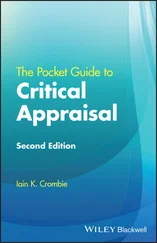1 Cover
2 Preface
3 About the Author
4 SECTION 1: Taxonomic Classification of Medically Important Microorganisms Taxonomic Classification of Bacteria Taxonomic Classification of Human Viruses Taxonomic Classification of Fungi Taxonomic Classification of Parasites
5 SECTION 2: Indigenous and Pathogenic Microbes of Humans Microbes Responsible for Human Disease Summary of Notifiable Infectious Diseases: United States, 2015
6 SECTION 3: Specimen Collection and Transport Virology: General Specimen Guidelines Virology: Specific Specimen Guidelines
7 SECTION 4: Bacterial Diagnosis Microscopy Primary Plating Media: Bacteria Primary Plating Media: Mycobacteria Specific Diagnostic Tests for Pathogen Detection
8 SECTION 5: Viral Diagnosis
9 SECTION 6: Fungal Diagnosis Mycology Specimen Collection and Transport Guidelines Specific Diagnostic TestsIdentification Tables
10 SECTION 7: Parasitic Diagnosis Specific Diagnostic Tests
11 SECTION 8: Vaccines, Susceptibility Testing, and Methods of Organism Identification
12 Index
13 End User License Agreement
1 Section 2 Table 2.1 Human indigenous flora αTable 2.2 Arthropod vectors of medically important diseases αTable 2.3 Fungal pathogens and geographic distributionTable 2.4 Parasitic pathogens and geographic distribution
2 Section 3Table 3.1 Bacteriology: Collection and transport guidelines a,bTable 3.2 Specimen collection and transport guidelines for infrequently encounte...Table 3.3 Guidelines for collection of specimens for anaerobic culture aTable 3.4 Recommended blood volumes to collect for blood cultures aTable 3.5 Mycology: Collection and transport guidelines a,bTable 3.6 Parasitology: Specimen guidelines aTable 3.7 Guidelines for processing stool specimens for parasites a,b
3 Section 4Table 4.1 Detection methods from clinical specimens for clinically relevant bact...Table 4.2 Recommendations for Gram stain and plating media a,bTable 4.3 Screening specimens for routine bacterial culture aTable 4.4 Processing specimens for mycobacterial identificationTable 4.5 Differential characteristics of catalase-positive Gram-positive cocciTable 4.6 Differential characteristics of most common clinically significant Sta...Table 4.7 Differential characteristics of catalase-negative Gram-positive cocciTable 4.8 Differential characteristics of beta-hemolytic streptococci aTable 4.9 Differential characteristics of viridans streptococciTable 4.10 Differential characteristics of common Enterococcus speciesTable 4.11 Differential characteristics of Gram-positive rodsTable 4.12 Differential characteristics of common Corynebacterium speciesTable 4.13 Differential characteristics of selected coryneform bacteriaTable 4.14 Differential characteristics of selected Bacillus species and related...Table 4.15 Differential characteristics of selected actinomycetes a,bTable 4.16 Differential characteristics of selected Nocardia species aTable 4.17 Differential characteristics of select, slow-growing Mycobacterium sp...Table 4.18 Differential characteristics of clinically relevant, rapidly growing,...Table 4.19 Differential characteristics of medically relevant Neisseria speciesTable 4.20 Differential characteristics of selected members of the Neisseriaceae...Table 4.21 Differential characteristics of selected Aggregatibacter, Actinobacil...Table 4.22 Differential characteristics of selected Capnocytophaga, Dysgonomonas...Table 4.23 Differential characteristics of Haemophilus speciesTable 4.24 Differential characteristics of selected members of the Enterobacteri...Table 4.25 Differential characteristics of Citrobacter species aTable 4.26 Differential characteristics of select Enterobacter, Pluralibacter, C...Table 4.27 Differential characteristics of Klebsiella and Raoultella species aTable 4.28 Differential characteristics of Proteus, Providencia, and Morganella ...Table 4.29 Differential characteristics of Yersinia species after incubation at ...Table 4.30 Differential characteristics of Aeromonas species aTable 4.31 Differential characteristics of Vibrio species aTable 4.32 Differential characteristics of Pseudomonas species aTable 4.33 Differential characteristics of Acidovorax, Brevundimonas, Delftia, C...Table 4.34 Differential characteristics of selected Bordetella speciesTable 4.35 Differential characteristics of selected oxidase-negative, oxidative,...Table 4.36 Differential characteristics of selected oxidase-positive, nonferment...Table 4.37 Differential characteristics of selected oxidase-positive, nonoxidati...Table 4.38 Differential characteristics of selected Campylobacter, Arcobacter, a...Table 4.39 Differential characteristics of select non-spore-forming, anaerobic, ...Table 4.40 Differential characteristics of selected Clostridium speciesTable 4.41 Differential characteristics of anaerobic Gram-negative bacteriaTable 4.42 Differential characteristics of the Bacteroides fragilis group
4 Section 5Table 5.1 Detection methods for viruses aTable 5.2 Cells used for viral isolation aTable 5.3 EBV serologic profiles under different conditions a,bTable 5.4 Hepatitis B virus markers in different stages of infection and convale...Table 5.5 Clinical diseases of parvovirus B19 and method of diagnosis a
5 Section 6Table 6.1 Methods for the identification of fungiTable 6.2 Characteristic fungal elements seen by direct examination of clinical ...Table 6.3 Mycology plating guideTable 6.4 Cultural and biochemical characteristics of yeasts frequently isolated...Table 6.5 Characteristics of selected Trichosporon species aTable 6.6 Characteristics of Aspergillus species aTable 6.7 Opportunistic moniliaceous fungi aTable 6.8 Zygomycetes aTable 6.9 Dimorphic molds aTable 6.10 Characteristics of common Trichophyton species aTable 6.11 Epidermophyton floccosum and common Microsporum species aTable 6.12 Dematiaceous fungi with macroconidia or other structures aTable 6.13 Dematiaceous fungi with small conidia aTable 6.14 Differentiation of Cladosporium and Cladophialophora species aTable 6.15 Scedosporium and Dactylaria species a
6 Section 7Table 7.1 Detection methods for parasitesaTable 7.2 Trophozoites of common intestinal amebae aTable 7.3 Cysts of common intestinal amebae aTable 7.4 Trophozoites of flagellates aTable 7.5 Cysts of flagellates aTable 7.6 Morphological characteristics of ciliates, coccidia, microsporidia, an...Table 7.7 Morphological characteristics of protozoa found in blood aTable 7.8 Morphological characteristics of blood and tissue nematodesTable 7.9 Morphological characteristics of helminths a
7 Section 8Table 8.1 Recommended pediatric immunization schedule aTable 8.2 Recommended adult immunization schedule aTable 8.3 Clinical and Laboratory Standards Institute (CLSI) documents related t...Table 8.4 Summary of CLSI antimicrobial susceptibility test methods for select b...Table 8.5 Routes of administration and drug class for select antimicrobial agent...Table 8.6 Routes of administration and drug class for select antifungal agentsTable 8.7 Routes of administration and drug class for select antiparasitic agent...Table 8.8 Antibacterial agents for specific bacteriaTable 8.9 Intrinsic resistance of selected Gram-negative bacteria aTable 8.10 Intrinsic resistance of selected Gram positive bacteria aTable 8.11 Important mechanisms of multidrug resistance in bacteria.Table 8.12 Organisms included in CLSI and EUCAST breakpoint tablesTable 8.13 Guide to interpretive criteria for select organisms for commonly test...Table 8.14 Summary of MALDI-TOF MS identification of bacteria, mycobacteria, and...Table 8.15 Gene sequencing targets for organism identification a
1 Section 7Figure 7.1. Intestinal amebae of humans. (Top row) Trophozoites. (Middle row) Cy...Figure 7.2. Intestinal and urogenital flagellates of humans. (Top row) Trophozoi...Figure 7.3. Relative sizes of helminth eggs (from CDC). Schistosoma mekongi and ...
Читать дальше












